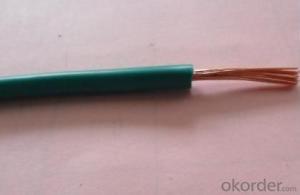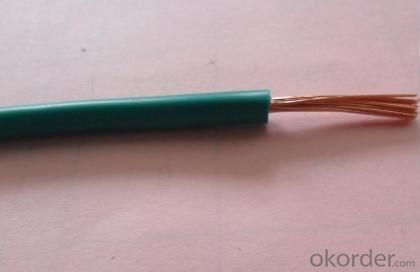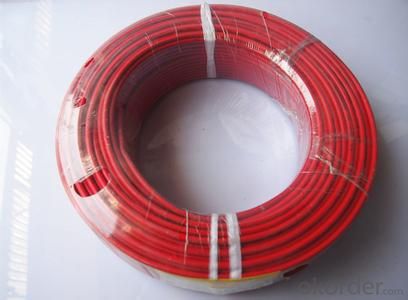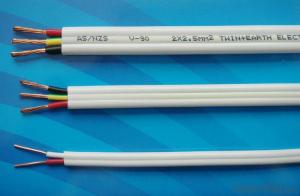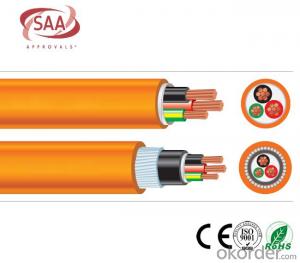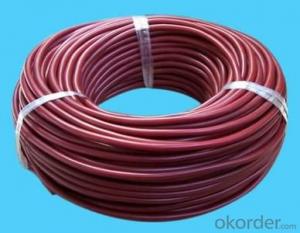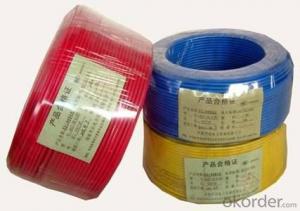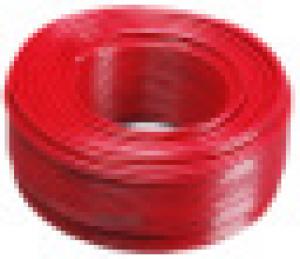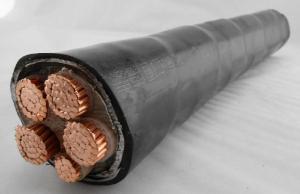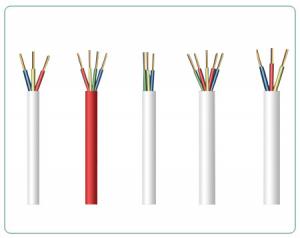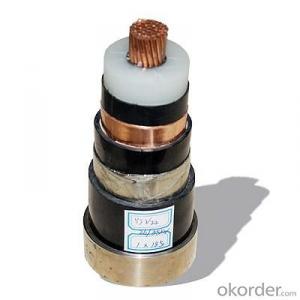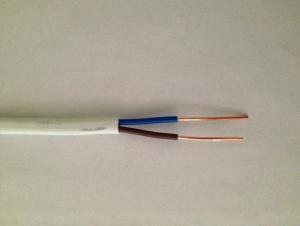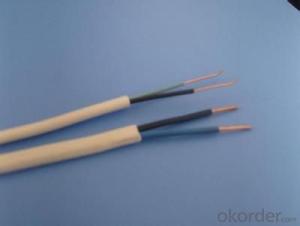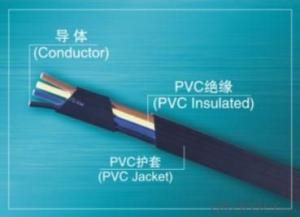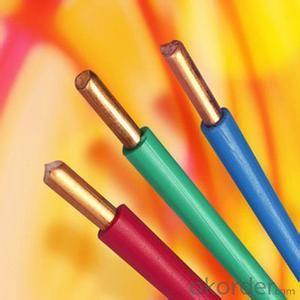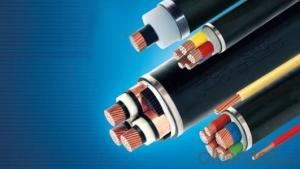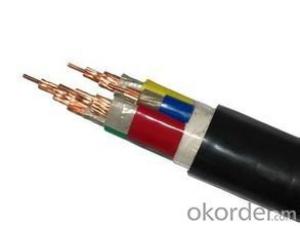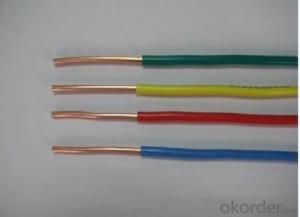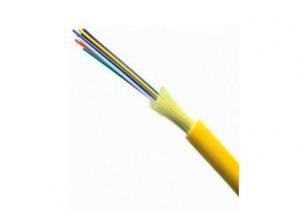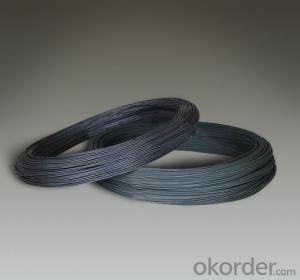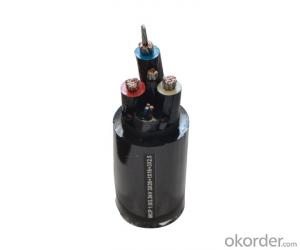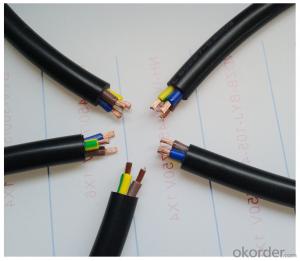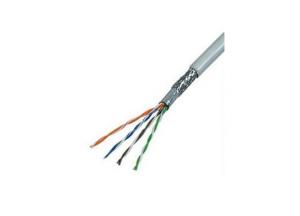Copper Core PVC Insulated Building Wire
- Loading Port:
- China Main Port
- Payment Terms:
- TT or LC
- Min Order Qty:
- -
- Supply Capability:
- -
OKorder Service Pledge
OKorder Financial Service
You Might Also Like
1. Product Description:
•Type: Low Voltage
•Application: Construction
•Conductor Material: Copper
•Jacket: PVC
•Standard: GB/T2171-1999
•Reference standard: ISO9001
•Color: Black or as your request
2. Product Characteristic:
Hydrophobic edge can withstand high pressure without breakdown, effectively avoid leakage, electric shock hazard. Corrosion resistant, anti pest PVC pipe has a general acid and alkali resistance, at the same time, due to the PVC tube containing no plasticizer, so no pest damage. Tension and pressure can withstand strong pressure, suitable for the installation or dark in the concrete, not afraid of compression rupture. Construction simple A:PVC pipe light weight, easy to transport and manual handling, construction and installation of light and energy saving.
3.Specification:
Type | Name | Laying place and requirement |
Crated voltage | Nominal Section (mm2 |
227IEC01(BV) | Copper conductor PVC insulated wires
Aluminum conductor PVC insulated wires | Fixed laid indoors Conduit etc. | 450/750
300/500
450/750 |
1.5...185
|
227IEC05 (BV) |
0.5...1
| |||
BLV |
2.5...185
| |||
227IEC07(BV-90) | Heat resistant copper conductor PVC insulated wire at 90 0C | Mainly be laid at the places of high temperature environment and can be laid indoors, conduits. | 300/500 | 0.5...2.5 |
4. Reference Picture:
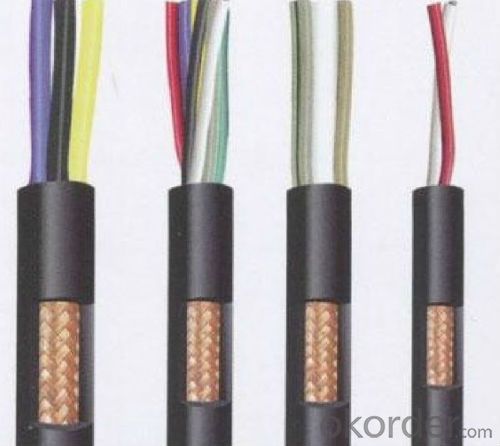
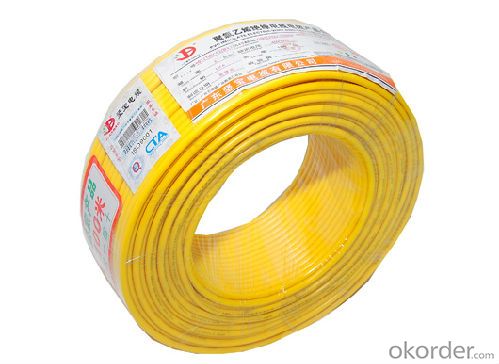
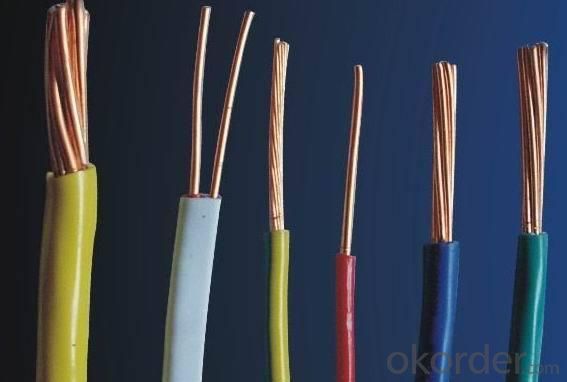
- Q: What does the wire ZC-BV mean? What is the specification? Which standard is executed?
- Home improvement are generally used BV copper wire, rarely used multi-stranded.
- Q: I have an unused electrical plug outlet that I want to tie into and run 110v to the barn. The plug outlet is 72 feet from the circuit breaker then from the plug outlet to the barn is another 70 feet or so. Is that too long a run or is it within specs?Thanks
- If the unused electrical plug outlet is the only one on a specific breaker in the main panel then you probably could. One problem is - How many and the size of what you are going to plug into the two new outlets. The size of the cable is another problem. the further you run and the more things you have plugged in - the larger the cable. Another - To bury the cable you will need Special underground, (UF), rated cable. Buried cable needs to be larger then overhead cable due to lack of heat dissipation. Usually a buried 120V cable has to be a minimum of 30 deep and some require schedule 40 PVC conduit or pre-assembled cable inside special, black, coiled conduit. Another - the cable from the main panel - to the unused outlet - needs to be the same size as the new cable to out-buildings so . . . It would be better to run a specific cable from the main panel and not tie into the unused outlet. It can be done unless you are planning on running much more than a few lights or low wattage accessories?.
- Q: I have a light switch that controls an outlet. Plugged into the outlet is a light for the room. I'm going to to install a wall light that will only work off the switch. So how do I make the switch only work the light and have the outlet work all the time? How can I wire this correctly?
- source.
- Q: I am getting quotes for installing a Guardian back generator. One contractor wants to charge almost $1200.00 to extend the electric wire 68' across the basement to the circuit box. I know this wire is very cheap, and I've paid electricians about $90 per hour in the past. A task like this should take a pro no more than an hour to do. I feel they are trying to cheat me.
- USA Wire is NOT very cheap. Copper has increased exponentially lately. If you think you are being cheated, get three quotes. If they are all within 10%, take the least expensive. If one of them is 40% or 50% less than the other two, he is the one who is going to cheat you by giving you less than what you expect. Make sure the work is performed by a licensed electrician and obtain a permit.
- Q: How to use the capacitor to test whether the wire is broken
- From the use of the point of view, the overall look than the line of ASUS MSI Gigabyte motherboard repair rate is slightly higher (but not significant), the service life can generally reach 3-5 years.
- Q: I was painting my friend's warlock for him so I had taken everything off of it (bridge, knobs, etc.) except for the pickups. I didn't want to reinstall the pickups because I've never done that before. But as fate would have it, the pickup wires snapped during the whole painting process and now I have to solder them back in somehow. Does anybody know of any websites that explain how to install pickups? Unless, of course, it's so easy that you can explain it to me right here. Thanks a ton.
- Well try peeling back a little bit of the plastic covering on the wire . this will make soldering easier. Next check where you are going to make your connection. It should be kinda clean (free from paint) Then heat up a soldering gun and get your solder. You might come out easier if someone else takes a pair of tweezers and holds the wire in place . basically heat the solder over the connection point untill a small amount drops in place. It should cool and seat wire where you want it. If not just heat the solder back up a little and remove wire and start process over again
- Q: Home decoration, the original electrician to open the single to buy is 2.51.5 BVV line, and later he drilled holes are not big enough (more lines, there are network cable, monitoring, video) said to switch to BVR line. I would like to ask, with a single strand of the line is good or more shares of the good, or are the same, if the single shares of the good I would like to put him big hole again. Hurry more
- BVV stands for PVC insulated, PVC sheathed, copper core (hard) cloth wire. Often referred to as jacket line, single-core is round, double-core is flat. Often used to mount wires. BVR stands for PVC insulated, copper core (soft) cloth wire. Often referred to as soft lines. As the wire is relatively soft, often used for electric drag and motor connection and the cable often have a slight movement of the occasion. It is recommended to use BVR line, there are strong and weak not to be wired together, that is, network cable, monitoring line, video lines and wires can not be in the same slot.
- Q: I know they shouldn't be allowed to view pornography, but what about electrical wiring videos as well?If they do, and they learn how to do electrical work, would that make them want to experiment and try things at home? If they did that, they might get electrocuted.
- We should stop them.
- Q: I know what the hot wire and ground wire are but why do you need a neutral wire? The hot wire is black and the ground is green right? So neutral is white? My bigger question though is why do you need a neutral wire--what is its purpose? Thank you!
- Your query provides limited information, yet i think of you're conversing with reference to the hot breaker for the addition, and not the kitchen lighting fixtures circuit. you have a short someplace if no longer something is plugged in or working. to ensure, unplug each little thing and close off any lighting fixtures on that circuit. Reset breakerif it journeys you have a short circuit (black white wires crossed or touching ) or a black cord grounding out someplace. seems such as you have the breaker under pressure out into the container ideal. it rather is not correct the place (on the sector bar) which you connect the white cord. you maximum possibly have an argument with the wiring interior the addition. final, you may attempt utilising yet another breaker, quickly, to be sure your breaker is powerful.
- Q: What is the meaning of the national standard BVR?
- 2 When the two power cables are used in parallel, the length of the model specifications is best to be unified
Send your message to us
Copper Core PVC Insulated Building Wire
- Loading Port:
- China Main Port
- Payment Terms:
- TT or LC
- Min Order Qty:
- -
- Supply Capability:
- -
OKorder Service Pledge
OKorder Financial Service
Similar products
Hot products
Hot Searches
Related keywords
